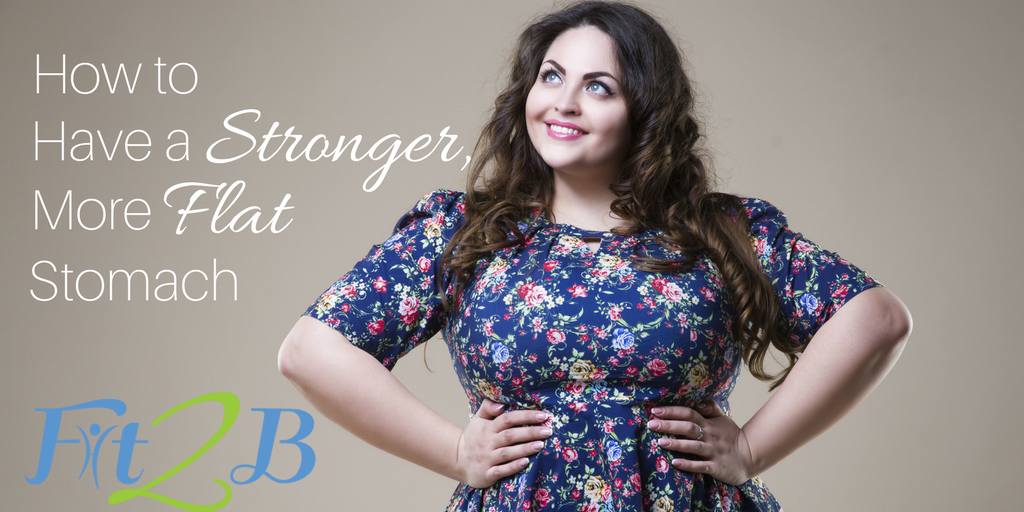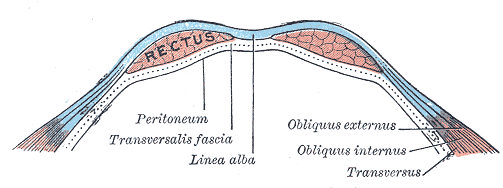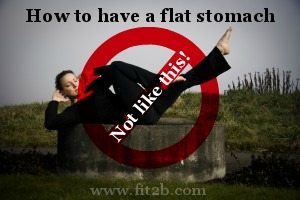Blog
How to Have a STRONGER, More FLAT Stomach!
 This blog was originally published in July 2011 and has continued to connect with those searching for information about diatsasis recti, so we decided to update and republish it in April 2018.
This blog was originally published in July 2011 and has continued to connect with those searching for information about diatsasis recti, so we decided to update and republish it in April 2018.
Regardless of your background (surgeries, pregnancies, age, etc.), you CAN obtain flatter, stronger abs. It’s NOT about your six-pack, and it IS all about connecting to your deep core with strategies that are typically not taught to most mainstream fitness professionals.
When I graduated from Oregon State with a degree in Exercise and Sport Science, I was pretty dang sure that I had been taught everything there was to know about how to get anyone into great shape. Perhaps I knew a lot at the time. That was back in 2001, though, and the thing about working in the fitness and wellness industry is that THINGS CHANGE! Real professionals will keep reading and keep researching, and I’m thankful I did just that.

To be perfectly candid, I was misled and mistaught to believe that bigger is always better, and that if you want a strong core and a thinner belly, you need to build up the six-pack (rectus abdominus) and the obliques with things like crunches, situps & planks.
The more, the better, right? WRONG!
The pages in my certifying manual for AFAA are now dog-eared where the information on abdominals is severely understated, and my college notes have been highlighted with notations leading to research that totally contradicts what I was taught—and what is STILL being taught (such as this terrible article with loads of misinformation on Mercola about how crunches are still the best sit up . . . What?)
Since college, and since subjecting my core to pregnancy and birth, I have learned the secret to a flatter stomach and a rock-solid core—a core that lets you jump on the trampoline without peeing your pants, a core that heals after having a baby, a core that is there for you when you need to lift something heavy like a four-year-old kid, a core that heals completely after abdominal surgery. And that secret is so simple, and it resides in how your God-given girdle—your transverse abdominus (TVA)—works together and connects to your breathing diaphragm and your pelvic diaphragm (the top and bottom of your core).
“Transverse” means this abdominal muscle crosses all the way around your whole middle. It wraps around you and hugs you together! When people think of “abs,” they usually think of a rippling, bulging six-pack, but that is only one part of a set of three muscles that make up your abdominal wall . . . And do you really want a BULGING six-pack? Because I have news for you: a belly bulging under pressure (outside of pregnancy) is a sign of a weak core, not a strong core! 
The image above is from Gray’s Anatomy (not the show, rather the textbook). What Gray missed is that our obliques actually surround the rectus abs and run criss-cross applesauce across our center line of fascia, the linea alba. He had it right that the transversalis fascia runs behind the abs, circling your entire middle from your spine all the way around to your navel.
According to Diane Lee, world famous author and researcher on all things related to diastsis rectus abdominus (DRA), the transverse abdominus works through intra-abdominal pressure and abdominal tension.
Transverse is the only muscle that holds the abdomen back in.” –Diane Lee, speaking to the 2018 Birth Healing Summit
Now, while the transverse is my favorite core muscle, as you can see we must be aware that it’s not alone. I think the way that our diaphragm, pelvic floor, multifidus, and transverse are all interconnected and working together to help us breathe, stabilize our spines, and so much more is so awesome!
Okay, when am I going to tell you how to have a flat stomach?
Not until I remind you that bellies are a nice side effect of a healthy gut, and that “flat” is a very subjective term into today’s world. Not until I tell you why you DON’T have a flat stomach!
There are two main reasons which hinge on hundreds of personal history factors as to why your stomach doesn’t get flatter, no matter how much core work and dieting you’ve done:
- First, you are likely dealing with some mismanaged intra-abdominal pressure, thanks to your alignment, exercise choices, foods that are bloating you, pregnancy, and/or the job you work that has you sitting or bending over a lot, etc.
- Second, your abs are unlike any other muscle in the body because they don’t entirely connect just bone to bone; your abs are joined together by a thick band of connective tissue called the “linea alba” that runs down your middle. You may have a dysfunctional diastasis recti in your linea alba—check yourself here.
Many personal trainers and well-educated fitness professionals have been taught how to ISOLATE each muscle in the body in order to focus upon and build up every weak area – and isolation work is appropriate for rehabilitative and restorative needs – but the ABS ARE NOT ISOLATED. Your abdominals are CONNECTED to each other—anatomically and physiologically JOINED by the fascia of your linea alba in a normal, healthy set of abs—but they also work independently and coactivate with other muscles! They’re mind-blowing!

HERE IT IS: You do not have a flat stomach because of pressure. Something in your life—be it your eating style, alignment, choice of exercise, abdominal trauma, obesity—has created a permanent outward push that has disrupted your core’s ability to hold itself where it belongs. Often {not always} this causes a diastasis recti where your linea alba has been stretched out by chronically mismanaged intra-abdominal pressure.
Doing mainstream ab exercises like crunches, sit-ups, and planks with poor form, without the proper breathing and transverse recruitment, will increase pressure in your core canister if you don’t “blow before you go” as Julie Wiebe puts it.
During pregnancy, a baby causes intra-abdominal pressure (hello, the precious wee one grows in there and pushes out on your abdominal wall!) and that separation is thought of as “normal” and expected—but it’s not supposed to stay that way, and I’ve had clients improve their DR during pregnancy with my routines!
 However, many things besides pregnancy can raise your internal pressure and push out your abs and pelvic floor: Intra-abdominal fat takes up space and raises pressure . . . Bending over a lot without aligning and activating your core . . . Sitting at a desk job for hours a day and just “letting it all hang out” . . . Playing sports, dancing, doing gymnastics where the ribs flare and the spine extends a lot and stretches the abs out . . . Surgery where the abs have been sliced through so “the flex” doesn’t even work right anymore . . .
However, many things besides pregnancy can raise your internal pressure and push out your abs and pelvic floor: Intra-abdominal fat takes up space and raises pressure . . . Bending over a lot without aligning and activating your core . . . Sitting at a desk job for hours a day and just “letting it all hang out” . . . Playing sports, dancing, doing gymnastics where the ribs flare and the spine extends a lot and stretches the abs out . . . Surgery where the abs have been sliced through so “the flex” doesn’t even work right anymore . . .
If you want to see for yourself how crunches done wrong can bulge your core, click here for a graphic video of what happens to a real vulva subjected to poor crunching technique.
In that last link, you can really see how crunching pushes things OUT of your bum, which is NOT a good thing. If it doesn’t show, then you might need to temporarily disable any internet filters you’re using to guard against adult content, and I am not responsible for any nastiness that YouTube puts on the sidebar videos. Just watch the video of what happens to your vagina (guys, it affects your junk too) during crunches, and don’t click anything else YouTube correlates to it. One more note: At the end of the video, it says “avoid abdominal exercises.” It’s talking about crunches and situps, which we don’t do on Fit2B because we utilize other moves.
And please scroll back up and look at that Gray’s Anatomy picture.
Visualize those two red rectus sections pulling apart when the linea alba separates during overstretching and overworking during sports or pregnancy or just the daily grind of a job that has you bent forward a lot so your belly hangs down. Imagine how the core connection gets totally sliced during surgery! The nerves are cut! And when people see that they have a pooch, they’ve been programmed and brainwashed to believe that crunches are the thing to do to get rid of that pooch.
This is not about “sucking it in.”
Nooooo! God forbid! That really messes up your internal pressures. The type of core activation I teach in our videos will fire up your whole core safely and effectively. Then I teach you how to integrate your whole body in our home exercise videos.
Click for a FREE Fit2B exercise video
I’m sure you’ve heard someone say to a pouting child, “Be careful; if you make that face too much, it will stick that way.”
That is a good metaphor for your abs.
If you carry a baby for 9 months, or your belly is pressured outward by always leaning forward, or your muscles have been surgically sliced so you couldn’t pull your belly in if someone paid you, then your abs have essentially become “stuck.”
 Your transverse is weak and deflated and has trouble responding and going the right way when you do a belly breath. At that point, all the crunches in the world won’t make it better, because crunches take us out of alignment and usually increase intra-abdominal pressure!!!
Your transverse is weak and deflated and has trouble responding and going the right way when you do a belly breath. At that point, all the crunches in the world won’t make it better, because crunches take us out of alignment and usually increase intra-abdominal pressure!!!
The Solution: You can get a flatter stomach by living in better alignment, strengthening your transverse abdominus and it’s friendly coactivators, focusing on movements where you DO have core control, learning how to align and recruit your core to minimize pressure in more challenging movements, and—of course—eating foods that don’t make you bloat.
First, figure out if you have a diastasis recti which may be contributing to your poofy tummy. If you have a huge split in your abs, you’ll need to heal it, because living with a fat-looking gut and weak abs when you’ve tried your hardest to get rid of it while only making it worse is discouraging. Plus, the transverse is tied to your pelvic health, too, and abdominal rehab could very well improve your sex life and bladder issues!!!

Free Diastasis Recti Self-Check Videos
Having a flat stomach is not about a pill, diet, waist trainer, or a weird vibrating mechanism that you strap around your middle to make it flex all by itself. It’s about a devotion to your core health and strengthening your awareness of your whole core, especially your transverse and its myriad connections to your breathing diaphragm and pelvic floor.
If you’re doing 300 mindless crunches a day and your belly keeps bulging, stop and reconsider. If you want a flat stomach that will truly hold you together and make you “fit to be” climbing mountains and playing with your kids and chasing dreams, then get ab rehab.
This site offers crunch-free workouts that complement core rehabilitation. We work you back to planks when you’re ready. We coach alignment, breathing, and technique, and we focus on loving your body, not beating yourself up!
Learn more about Fit2B membership

I wonder if this is why I always had a very flat stomach when I was thin? I used to suck my stomach in all the time because I hate doing crunches etc. Now I will be doing this again 🙂
Excellent explanation, Bethany! I think when people workout their abs, they think the old way that the more crunches the better. It is about control just as you stated. You can really do more damage than good if the movements are not controlled and concise. It can also waste all of your valuable effort and promote back injury.
Well this nearly made me cry! I was a ballet dancer growing up and try as I did, I always had a pooch! At one point I was doing 600 crunches a day- besides all the other crazy dance moves I did. Now four children and 1 C-section later I need some tummy help! So glad to have found this! Thank you!
How can I share this great article on Facebook?
so what if you don’t have a gap, but still can never get rid of a belly? I’m thin, small in size, short waisted, and no matter what I havea rounded tummy, no matter how thin and toned I am. My waist is almost as big as my hips. I always have that slightly pregnant look. Three kids and almost 40, I’d just love to have a waistline that is proportioned to the rest of me.
The link to the crotch shot video just takes me to a Spanish site?
Julie, I will look into that link. It seems to have moved. Sorry about that.
Just watched your video, are you pregnant or did you recently have a baby? Just wondering since you don’t look as fit as you would expect a person to be that is saying everyone else is doing it wrong (your stomach isn’t flat).
Sally, if you are referring to the diastasis self check video, that is Kelly Dean who is a physical therapist specially trained in core rehabilitation. While she is a guest in some of the workouts on Fit2b, I am the main instructor and founder of Fit2B. Kelly has had 8 pregnancies, including 3 live births and 5 miscarriages. Her story is incredible: She’s gone from a 6 finger DR to a 2 finger DR and you can read more about her work on her site at thetummyteam.com … That said, this article talks about why tummies aren’t flat from the perspective of fitness and diastasis recti. Its title is “how to have a stronger, more flat stomach.” My stomach is flat, most of the month 😉 But how do you define flat? I encourage you to read more on the Fit2B blog and learn about our mission here on Fit2B which isn’t really flatness, per se, but functional strength. Our workouts are designed to help our members lose inches off their waist by realigning the spine and retraining their god-given girdle muscle: transverse abdominus. One thing this article doesn’t address is nutrition. I’d also like to add that my body has changed a lot in the 5 years that we have been filming workouts. I was 20 lbs heavier when we launched Fit2B than I am now, but I was also breastfeeding my son when we launched. I always lose the last of my weight after I conclude nursing. Thanks for your question. P.S. I don’t think “everyone else is doing it wrong.” But quite a few people aren’t reading the research 😉
You’re awesome, Bethany!
Hello!
I love your site. I am a pilates trainer and have been doing and trainer since 2000, I know everything you are speaking of and agree.
I had my appendix burst in 2005, had emergency surgery laperscopicly. I continued shortly after.
I have had two ambilical hernia surgeries, one in 2014 &2015. I am a very healthy eater and not over weight. In the last year I have noticed the bulge, feels like everything is being pulled forward that I can’t even pull my prolly button in.
I came across your article and site during my research. I am writing because I have done your test and can fit 3-4 fingers in. I have never been pregnant but I’m looking for answers. thanks for your help!!
Pingback: November 30-Day Walking Gratitude Challenge
Pingback: Diastasis Recti & Belly Button Integrity
Pingback: A Letter to Moms
Pingback: Can Strong Abs Reduce Stretch Marks During Pregnancy? | Fit2B Studio
Pingback: Is Your Middle All Muddled? | Fit2B Studio
Pingback: Music & Your Midline: Cues For Your Core | Fit2B Studio
Pingback: Binding your belly after birth
Pingback: 6 Exercise Tips for Diastasis Recti | The Tummy Team